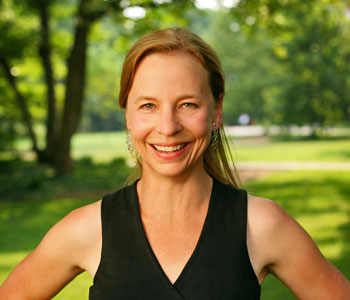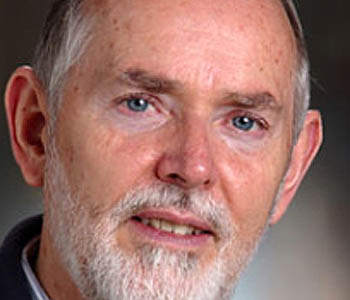William Egginton
The Theater of Truth: The Ideology of (Neo)baroque Aesthetics
Stanford University Press
184 pages
ISBN 978 0804769549
The Theater of Truth: The Ideology of (Neo)baroque Aesthetics argues that seventeenth-century baroque and twentieth-century neobaroque aesthetics have to be understood as part of the same complex.
Rather than a return to the stylistic practices of a particular time and place, the neobaroque should be described as the continuation of a cultural strategy. It is produced as a response to a specific problem of thought that has beset Europe and the colonial world since early modernity.
This problem, in its simplest philosophical form, concerns the paradoxical relation between appearances and what they represent. The aim of this book is to explore a series of expressions of this problem in the art and literature of the Hispanic Baroques, new and old.
In seven chapters, I build up a thesis concerning the relation of two baroque strategies, a "major" and a "minor" one, how these strategies emerged in the political and social world of the Spanish Empire, and how they continue to be deployed in the cultural politics of the present.
In short, The Theater of Truth is a book for those interested and engaged in the debates around baroque and neobaroque aesthetics. It offers a unified theory for the relation between these terms and a new vocabulary for distinguishing between their ideological values.

It is ultimately the theater of truth—both the truth that theatrical appearances claim to hide, and the theater that truth depends on for its appearance—that makes sense of the baroque.
The baroque, as I theorize it, be it as a stylistic marker or period in art history, may be difficult to recognize for those who thought they knew it well. When used in the way I do here, has not the baroque burst out of its boundaries in such a way as to diminish its descriptive value and hence its usefulness as a concept of either criticism or periodization? Indeed, when the concept seems simultaneously to engage with periods after the traditionally recognized historical baroque and to encompass phenomena lacking the traits commonly associated with the term, what remains of it at all?
I argue that the principal theoretical value of the term "baroque" derives from its relation as an aesthetic category to the historical period we call modernity. The historical baroque, I claim, owes its distinct fascination with certain aesthetic traits—in particular those of anamorphosis, mise en abîme, and trompe l'oeil, but also the juxtaposition of disparate terms (coincidentia oppositorum), the proliferation of décor, and a conscious embrace of artifice—to its privileged position at the dawn of the modern age. The organizing logic of that age is a theatrical one, in which the space of representation is severed into a screen of appearances and the truth presumed to reside behind it. It is this basic problem of thought that underlies the multiple strategies that baroque aesthetic production puts into play.
A problem in recent criticism has been to distinguish the apparent ideological value of these various techniques, both during the historical baroque and in the more recent manifestations of baroque style that have come to be identified as neobaroque. One tendency has been to identify the historical baroque with a state-organized attempt to deploy spectacle for the purpose of constructing pliable citizens, while associating the more recent Neobaroque as an opposing tendency, born of the periphery, that works to undermine traditional colonial power structures.
The trouble with this tendency is that it overlooks both subversive tenets in seventeenth-century European cultural production and aspects of contemporary baroque style that do not display any such critical value. Lois Parkinson Zamora's and Monika Kaup's designation of New World Baroque in place of neobaroque does much to correct the historical imbalance of the traditional terminology, but is not intended as a way of clarifying the ideological difficulties that nestle in both terms.
In response to these issues, I came to propose the central terminological distinction in this book. As many have also argued, I see baroque and neobaroque aesthetics as historical bookends to the modern period. For negotiating between their old and new world manifestations, I happily accept Parkinson Zamora's and Kaup's distinction. What I add here is a new distinction between modalities or strategies of baroque aesthetic production.
In that sense, and against José Antonio Maravall, for example, I do not believe one can generalize about the ideological value of the baroque period in its entirety, although one can certainly identify tendencies, as I do. Instead, we need to see baroque aesthetics on all fronts as engaging with the problem of thought endemic to modernity, and doing so through a deployment of at least one of two strategies: the major or the minor.
This distinction frees us to examine both historical baroque and neobaroque phenomena in their full complexity, without, on the one hand, confounding historical periods and geographical tendencies or, on the other hand, confusing centralizing ideological discourses with others that work ironically to undermine those same discourses.
The concept of major and minor strategies, then, is key to a non-reductive historical understanding of both baroque and neobaroque aesthetics. This historical understanding, in turn, should grasp the aesthetic production of the baroque, both new and old, in relation to modernity's core problem of thought: the theatrical dissociation between appearances and the truth they hide. For it is ultimately the theater of truth—both the truth that theatrical appearances claim to hide, and the theater that truth depends on for its appearance—that makes sense of the baroque, both old and new.
In the introduction I draw some close parallels between baroque manipulation of appearances and the control exerted by the Bush administration over the news media. The use of the media to rally support behind policies that would founder without that support is a clear case of a baroque manipulation of appearances for the purpose of political gain. The potential voters and taxpayers who lent their support to "the war on terror" and the war in Iraq in the early years of the twenty-first century did so largely because of their belief in a certain reality projected beyond the appearances.
The Bush representation apparatus, for example, was successful in convincing vast swaths of voters that behind the necessary and lamentable apparatus of representation—the polls and the concocted photo ops, the faked newscasts and the staged “town hall” meetings—President Bush was a man of "character.” Indeed, as was widely reported and fretted about, many Americans cited issues of character and value as the reason they voted for him in 2004.
The paradox is that no one is (or very few are) actually taken in by the performance, in the sense of not realizing that it is a performance; the baroque becomes pertinent when, in the very midst of the performance, the viewer, in full knowledge of its artifice, becomes convinced that the artifice in fact refers to some truth just beyond the camera's glare.
This effect is not limited to outright political representation such as campaign programming or the manipulation of the news media that was so prevalent during the lead up to the Iraq War. The entertainment industry can be counted on to produce content for television and film that coheres with the overall message coming from the centers of political power. As Slavoj Zizek wrote in an article in The Guardian, for instance, the wildly successful Fox series 24, in which Kiefer Sutherland plays a government anti-terrorism agent, abetted in certain, very specific ways the administration's efforts to minimize criticism of its handling of terror suspects.
The show's hook is that it plays in "real" time and that each of the season's 24 hour-long episodes corresponds to an hour of one continuous day in the life of agent Jack Bauer. The show is obviously fiction, and no one among its producers or probably anyone watching it would argue the opposite. Nevertheless, precisely in its function as artifice, Fox’s 24 refers implicitly to a reality that is "out there," beyond representation, independent of its fictitious message. Because everyone can comfortably agree that this is the case, we the viewers end up being force-fed a "neutral" and "independent" reality that is in fact a very specific political version of reality.
In the case of 24, the "real time" of the narrative (which, as Zizek points out, is augmented by the fact that even the time for commercial breaks is counted among the 60 minutes) contributes to the sense of urgency that, for instance, if Jack and his well-meaning colleagues don't get the answers they need—by whatever means necessary—millions of innocent people will die in a catastrophic terrorist attack. Obviously, we have to have some degree of flexibility when it comes to issues like the torture of detainees.

The entertainment industry can be counted on to produce content for television and film that coheres with the overall message coming from the centers of political power.
I hope this book will awaken readers, reminding them of the persistent potential of aesthetic experiences to shape our thoughts, our political endeavors, and our sense of self. In short, this book is about the power of an aesthetic form in both a distantly historical manifestation and a very contemporary one. It is about how that aesthetic form can transcend media, cultures, and historical moments to make its force felt. Finally, it is also about how artists, writers, and thinkers can deploy such aesthetic forms in different, and politically volatile ways, whether to further subjugation, or to aid in the revelation and critique of repressive and homogenizing norms.




We don't put paywalls. We don't distract you with ads. We don't sell your data.
Please help to keep this running!